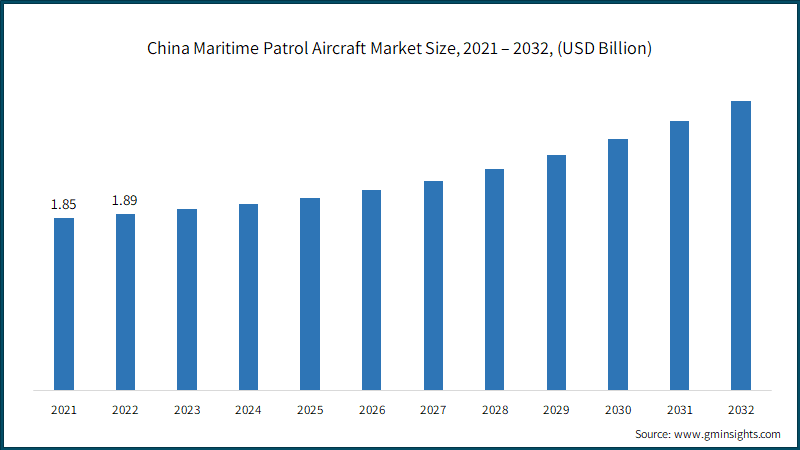Home > Aerospace & Defense > Aviation Technology > Maritime Patrol Aircraft Market
Maritime Patrol Aircraft Market Analysis
- Report ID: GMI4666
- Published Date: Sep 2023
- Report Format: PDF
Maritime Patrol Aircraft Market Analysis
The Sensors segment crossed USD 2.5 billion revenue in 2022 and is poised to witness around 7% CAGR from 2023 to 2032. Sensors provide critical data for maritime surveillance, reconnaissance, and security missions. They enable MPAs to detect, track & identify vessels, submarines, and other objects in vast maritime domains. As sensor technologies develop, they offer higher resolution, longer ranges, and improved accuracy, bolstering the MPA's ability to monitor & respond to evolving threats. In addition, the integration of various sensors, such as radar, sonar, electro-optical/infrared (EO/IR), and signals intelligence (SIGINT) systems, allows for comprehensive situational awareness, making MPAs invaluable assets in safeguarding territorial waters, combating piracy, and addressing illicit activities.

The turboprop segment held approximately 55% of maritime patrol aircraft market share and generated USD 9 billion in 2022. It is expected to grow at a lucrative pace by 2032, due to their unique combination of efficiency, endurance, and versatility. These engines provide the necessary power to MPAs while ensuring extended flight durations, crucial for covering vast maritime areas. Their ability to operate at lower speeds & altitudes allows for effective surveillance and reduced operational costs.
Moreover, they enable shorter takeoff and landing distances, crucial for operations from naval vessels or remote airfields. In the evolving landscape of maritime security challenges, where extended patrolling and operational flexibility are paramount, turboprop-powered MPAs are becoming increasingly favored for their ability to meet these demands efficiently and cost-effectively.

Asia pacific maritime patrol aircraft market captured about 30% revenue share in 2022. Asia Pacific has one of the world's largest defense budgets and a strong commitment to technological advancement in defense. The region's dynamic economic growth has increased maritime trade activities, leading to a greater need for maritime security and surveillance, consequently driving the demand for MPAs. It is escalating territorial disputes, particularly in the South China Sea, have prompted nations to bolster their maritime capabilities, including the acquisition of MPAs for reconnaissance and monitoring purposes. As nations modernize their defense forces, there is a focus on procuring advanced MPA systems to ensure maritime domain awareness.

